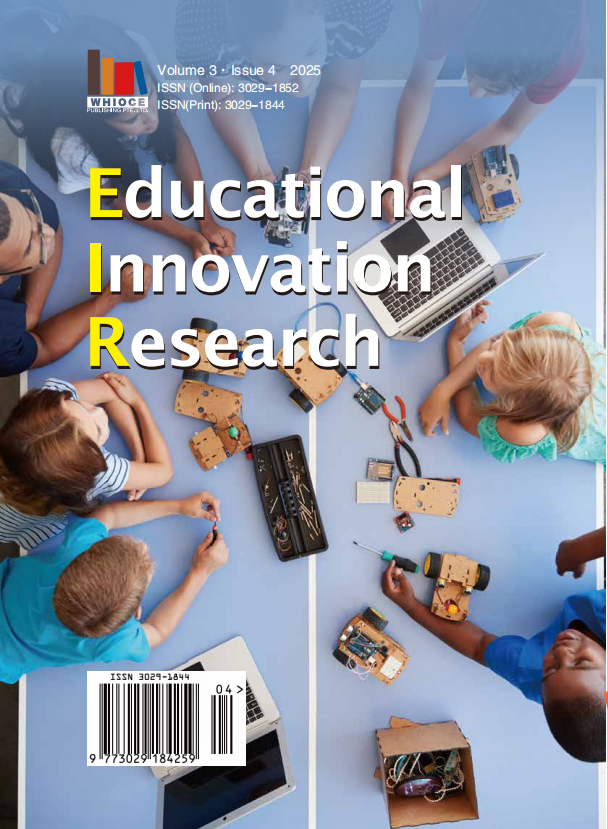A Pathway to Intercultural Competence and Global Perspectives: Integrating Chinese Bashu Culture into College English Education
DOI:
https://doi.org/10.18063/eir.v3i4.1015Keywords:
Bashu Culture, College English Course, International Communication, teaching StrategiesAbstract
This study explores the integration of Bashu (present Sichuan and Chongqing province) culture into college English courses in China, and its effectiveness in enriching curriculum content and enhancing students’ intercultural communication skills and global perspectives. By embedding elements of Bashu history, art, customs, technology, and literature into English teaching, students gain a deeper understanding of the uniqueness of Bashu culture while improving their ability to articulate and disseminate local culture in English. The findings underscore the importance of incorporating cultural elements into language teaching to promote students’ comprehensive language application abilities. To sustain and expand such educational practices, the study emphasizes the need for proactive measures from policymakers and educators. Establishing collaborative mechanisms with cultural and academic institutions is also recommended to provide richer resources and broader practical platforms for students. Researchers could develop and refine evaluation tools to measure the long-term impact of cultural integration on students’ language proficiency and cultural understanding, as well as examine the varying responses of students from different cultural backgrounds to Bashu culture instruction, thereby refining teaching strategies and content. Future studies could also broaden the research scope to include a variety of university types and disciplines to assess the generalizability of the teaching approach.
References
Cao, H., & Champadaeng, S. (2024). The Art of Chinese Calligraphy: Educational Protection and Literacy Study of Cultural Heritage. International Journal of Education and Literacy Studies, 12(3), 160–171. https://doi.org/10.7575/aiac.ijels.v.12n.3p.160
Li, Y. (2023). Analysis of information graphic design of the Shu (Sichuan) area culture -- taking the Sanxingdui Ruins site as an example. BCP Education & Psychology, 11, 51–60. https://doi.org/10.54691/crggza48
Yang, Y., Li, H., Lu, Y., Xia, R., James, N., Chen, H., & Zhao, Y. (2024). The Agricultural Economy of the Sanxingdui Culture (3700–3100 BP): Archaeological and Historical Evidence from the Chengdu Plain. Land, 13(6), 787. https://doi.org/10.3390/land13060787
Vong, L. T. (2013). An investigation of the influence of heritage tourism on local people’s sense of place: the Macau youth’s experience. Journal of Heritage Tourism, 8(4), 292–302. https://doi.org/10.1080/1743873x.2013.787084
Zalli, E. (2024). Globalization and Education: Exploring the exchange of ideas, values, and traditions in promoting cultural understanding and global citizenship. Interdisciplinary Journal of Research and Development, 11(1 S1), 55. https://doi.org/10.56345/ijrdv11n1s109
Yang, M., Jiao, M., & Zhang, J. (2022). Research on urban resilience and Influencing Factors of Chengdu-Chongqing Economic Circle. Sustainability, 14(17), 10585. https://doi.org/10.3390/su141710585
Zhao, Y., Wang, Z., Yong, Z., Xu, P., Wang, Q., & Du, X. (2023). The spatiotemporal pattern evolution and driving force of tourism information flow in the Chengdu–Chongqing City cluster. ISPRS International Journal of Geo-Information, 12(10), 414. https://doi.org/10.3390/ijgi12100414
Zhou, M. (2024). Regional differences in health resource allocation: a longitudinal study in the Chengdu-Chongqing economic circle, China. BMJ Open, 14(3), e082721. https://doi.org/10.1136/bmjopen-2023-082721
Fu, H., & Li, F. (2023). The Innovation and Practice of Synergistic Cultivation Model of Integrating the Spirit of Volunteer Teaching in Western China into the Moral Education of College English. Frontiers in Education Technology, 6(3), p147. https://doi.org/10.22158/fet.v6n3p147
Hu, M. (2024). An Analysis of Strategies for Improving the Information Literacy of College Teachers under the Background of Educational Informatization. Education Reform and Development, 6(7), 25–31. https://doi.org/10.26689/erd.v6i7.7721
Richards, G., & Wilson, J. (2007). Tourism, Creativity and development. In Routledge eBooks. https://doi.org/10.4324/9780203933695
Yu, Q. (2023). The present situation and countermeasures of the protection and inheritance of urban historical and cultural heritage in China. Communications in Humanities Research, 16(1), 12–19. https://doi.org/10.54254/2753-7064/16/20230053
Liu, X. (2023). Navigating the virtual classroom: exploring strategies to improve student satisfaction in college English online teaching. Current Psychology, 43(12), 11204–11222. https://doi.org/10.1007/s12144-023-05209-5
Needham, J. (1985). Volume 5, Part 1: Paper and Printing. In Science and Civilisation in China, edited by Joseph Needham. Cambridge: Cambridge University Press.
Li, H. (2024). The impact of cultural introduction on improving students’ cross-cultural communication skills in college English teaching. Transactions on Economics Business and Management Research, 8, 201–205. https://doi.org/10.62051/e5rjjw55
Xiong, S., & Eng, L. S. (2024). Learning More about Chinese Culture through Speaking: English Speaking Module Incorporating Chinese Culture for EFL College Undergraduates in China. Forum for Linguistic Studies, 6(3), 620–638. https://doi.org/10.30564/fls.v6i3.6615
Zhang, J., Ismail, H. H., & Sulaiman, N. A. (2024). Exploring college English teacher’ abilities in CLIL-Based classrooms in undeveloped areas of China. International Journal of Learning Teaching and Educational Research, 23(7), 320–346. https://doi.org/10.26803/ijlter.23.7.17

